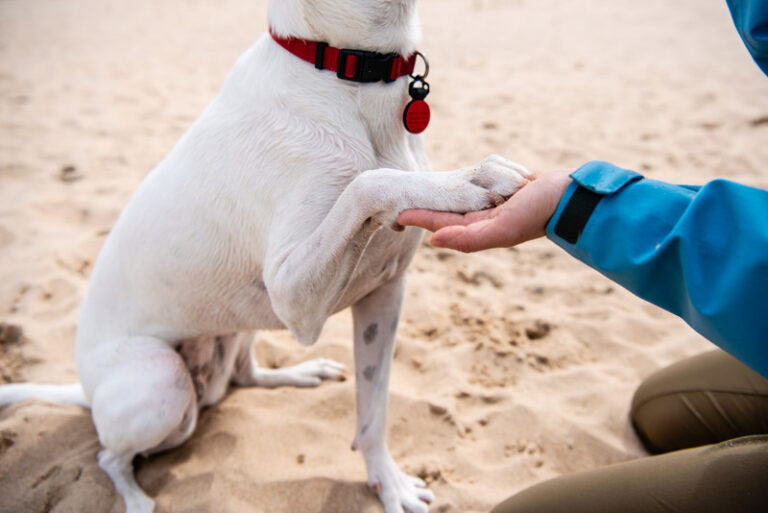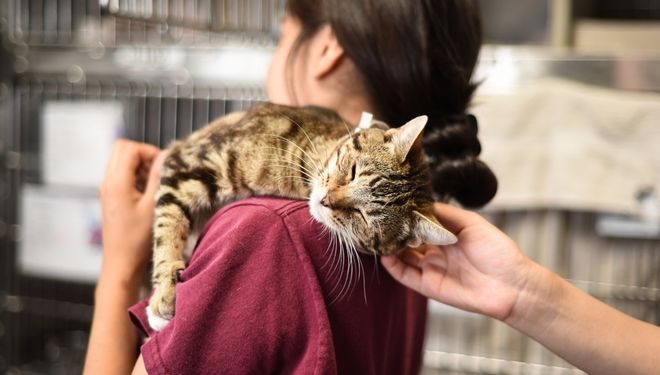We first published this blog in March 2020, a few weeks into the start of the COVID-19 crisis. It offered five ways for animal welfare leaders, and for our communities, to ensure we all did our part to protect pets from needless euthanasia as we grappled with the beginning of the pandemic:
- Stay up on the news
- Don’t take healthy stray pets to the shelter if they have other, viable alternatives
- Adopt or foster a pet
- Leave cats and kittens in the community
- Embrace change
It feels surreal to think of having written this over a year ago, when these lessons are just as urgent today—and not only because of the risk and uncertainty we face due to the Delta variant.
But instead of wishing things were different, I like to think of it as having mapped out guidelines that were needed in an emergency, which we keep using simply because they work.
The HASS elements take on special importance in times of crisis—when our resources, and our communities, are stretched to their limits because of disease, or mass evictions, or because it is summer and animal shelters are full.
In “normal” times, we and our communities still use the HASS elements to keep people and pets together, end the needless killing of animals in shelters, and innovate the role of animal shelters in our communities.
Even once this current crisis has passed—and we have to believe it will pass—using these five guidelines, and all the HASS elements, will help our shelters and communities save more animals, and preserve more families.
We’ve done it before. We can and must do it again. Here’s how:
A decade ago, a crisis like COVID-19 would have meant animal shelters closed their doors and quietly euthanized tens or even hundreds of thousands of pets. Today, thankfully, the landscape of animal welfare has changed so completely that the opposite is happening. Even in the first weeks of COVID-19, we’re seeing shelters send historic numbers of pets to foster homes, with some even completely emptying their shelters. Pet lovers like you are showing up like never before, taking home your ‘social distancing buddies’ and embracing pets who would otherwise have no hope.
In this moment of fear and uncertainty, and trepidation about what will happen for pets and people in the coming months, there is also an outpouring of love, kindness and compassion happening that is changing everything. All across America, we are taking on a collective responsibility for stray, unwanted and homeless pets.
What we, as leaders of animal shelters urgently need you to know, is that the challenges are just beginning. For animal shelters, the COVID-19 Pandemic couldn’t really have come at a worse time. We are at the beginning of the busiest part of the year, as ‘puppy and kitten’ season ensues and shelters and rescues are flooded with orphaned baby animals who need help. On top of this, shelters will intake countless cats and dogs who are sick or injured, abused or neglected or otherwise need immediate, lifesaving care. Add COVID to this mix and we’re seeing operational disruptions all the way from full closures to reduced adoptions, as people are told to stay home and avoid gathering in groups. Without your sustained help and support, we will see healthy, family pets euthanized simply because there is nowhere for them to go.
Here are five things anyone can do to help us continue to save lives:
1. Stay up on the news.
Keep up with the latest information from national animal welfare organizations. Just this past week, the National Animal Care and Control Association and the Association of Shelter Veterinarians made several recommendations for animal shelters. They said that animal shelters should be considered essential public services and should remain open and operational, but that they should focus on emergency services, including the intake of sick and injured animals and adoption and foster placement. They also said that even if pets cannot be immediately spayed or neutered due to a shortage of vets or in an effort to conserve medical supplies that are needed for COVID-19 human response efforts, pets should still be adopted (with vouchers given for spay and neuter later) or sent to foster homes until the pet could be spayed and neutered at a later date. For the average person, these recommendations might be surprising, but they are being made by industry leaders, animal control professionals and schools of shelter veterinary medicine for one reason: to prevent animals from dying in shelters in the midst of this crisis. By staying up to date with what the experts are saying, you can help explain recommendations and their rationale to friends, family and fellow animal advocates.
2. Don’t take healthy stray pets to the shelter.
If you find a stray pet in need of help, hold on to that animal and call your local shelter to file a found report. Post the pet on lost and found social media groups like Facebook groups, Craigslist and Nextdoor and try to get the pet home. By keeping pets in their neighborhoods, you may actually increase their chances of finding their way back to their families. If the pet you found is not reclaimed, contact your shelter and ask if you can help rehome the pet yourself. You can use those same social media platforms to find it a new home, which will help keep that pet out of the shelter system. If you own a pet and cannot keep it, try to find that pet a home yourself, instead of taking it to the shelter. Shelters need to maintain a low number of animals inside their walls right now because staff shortages and possible closures can mean the pets inside may not be able to get out.
3. Adopt or foster a pet.
The single most important thing anyone can do right now is to take home a shelter pet. Whether you foster or adopt, you will help to create a cushion of space so your shelter can help the pets who truly need lifesaving care once the busy spring and summer season begins. Before COVID-19, foster caregivers would often be asked to foster for a short period of time, from a couple of days to several weeks. That has all changed now, because we need foster parents to be part of helping us get their pets adopted. If you are a foster caregiver or plan to become one, read the Maddie’s Fund Foster Marketing Guide here.
4. Leave cats and kittens alone.
You find a litter of kittens and want to help. In most cases, the very best thing you can do is to leave them alone. Their mom is probably out finding food and will be back soon. Even in the best of times, kittens are one of the most vulnerable populations of pets in shelters and sadly, they don’t always survive without their moms. Unless they’re visibly sick or injured or otherwise in immediate danger, don’t move them and instead just monitor to make sure their mom returns in a few hours to care for them. For adult cats, the best place for them during COVID-19 is in the community. Just like with kittens, unless they need medical attention, adult cats should be left alone. Most communities are not performing spay and neuter services for community cats in an effort to conserve precious medical supplies. Here is what the National Animal Care and Control Association recommends when it comes to cat intake during COVID-19. Here is how American Pets Alive! can help you make sense of this recommendation.
5. Embrace change.
If we want to prevent indiscriminate euthanasia of shelter pets, we have to think outside the box and do things differently. In this moment of national crisis, the old ways of sheltering won’t help us save lives. As animal welfare leaders, we cannot succeed without your support and help. We are all in this together and you are the most important part of the lifesaving equation. Chances are, wherever you live, you’re going to see more cats and dogs roaming in your communities, as most shelters are focusing on emergency services only at this time. You might hear from a neighbor or family member that has to give up their animal due to job loss or illness. Animal shelters cannot help all of these pets alone. Within our communities, we must commit to taking a collective responsibility for helping pets and need while letting the shelters focus on the pets who need them the most – those that need emergency medical care or have other essential reasons to be sheltered.
As we enter the next few weeks, we ask you to help us turn your entire community into an animal shelter, caring for pets in the places they live, taking in animals that need you and supporting your local shelter by fostering, adopting, donating and simply spreading the word. Now is the time to help each other, help pets in need and embody the notion that “it takes a village” to save lives.








